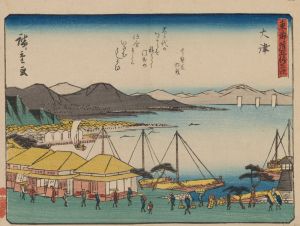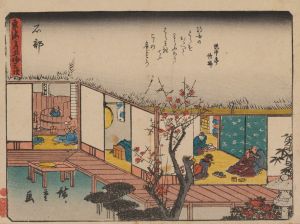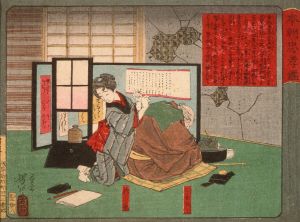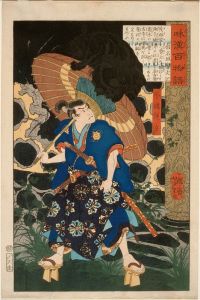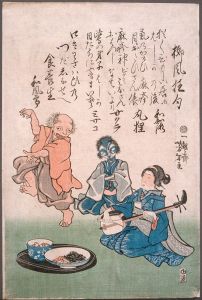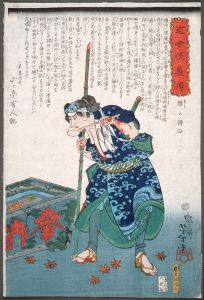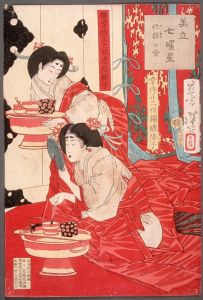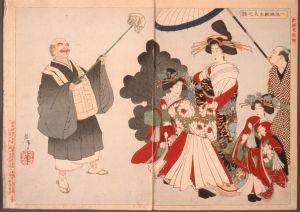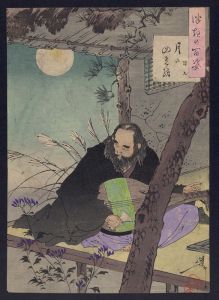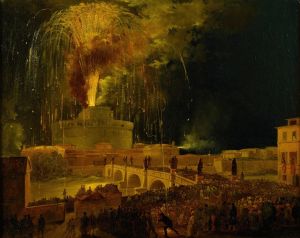
Cooling off at Shijo
A hand-painted replica of Tsukioka Yoshitoshi’s masterpiece Cooling off at Shijo, meticulously crafted by professional artists to capture the true essence of the original. Each piece is created with museum-quality canvas and rare mineral pigments, carefully painted by experienced artists with delicate brushstrokes and rich, layered colors to perfectly recreate the texture of the original artwork. Unlike machine-printed reproductions, this hand-painted version brings the painting to life, infused with the artist’s emotions and skill in every stroke. Whether for personal collection or home decoration, it instantly elevates the artistic atmosphere of any space.
"Cooling off at Shijo" is a woodblock print created by the renowned Japanese artist Tsukioka Yoshitoshi. Yoshitoshi, born in 1839 and active during the late Edo and early Meiji periods, is celebrated for his innovative approach to ukiyo-e, a genre of Japanese art that flourished from the 17th through the 19th centuries. This particular work is part of Yoshitoshi's larger body of work that often depicted scenes from Japanese history, folklore, and daily life, capturing the cultural transitions of his time.
Yoshitoshi's career spanned a period of significant change in Japan, as the country opened up to Western influences and underwent rapid modernization. Despite these changes, Yoshitoshi remained committed to the traditional art form of ukiyo-e, while also incorporating new techniques and themes that reflected the evolving society. His works are noted for their dynamic compositions, expressive figures, and the use of vivid colors.
"Cooling off at Shijo" is a testament to Yoshitoshi's skill in portraying everyday life with a sense of immediacy and emotion. The print depicts a scene of leisure and relaxation, capturing the essence of a warm evening in Kyoto. Shijo, a district in Kyoto, was known for its bustling streets and vibrant atmosphere, making it a popular subject for artists of the time. In this print, Yoshitoshi illustrates individuals taking a moment to cool off, likely by the Kamo River, which was a common practice during the hot summer months.
The composition of "Cooling off at Shijo" is characterized by its attention to detail and the careful arrangement of figures within the landscape. Yoshitoshi's use of color and line work creates a sense of movement and life, drawing the viewer into the scene. The print exemplifies Yoshitoshi's ability to convey the subtleties of human emotion and interaction, a hallmark of his artistic style.
Yoshitoshi's work, including "Cooling off at Shijo," is often celebrated for its ability to bridge the traditional and the modern. While rooted in the classical ukiyo-e tradition, his prints also reflect the changes occurring in Japanese society during the Meiji era. This duality is part of what makes Yoshitoshi's work so enduring and significant in the history of Japanese art.
Throughout his career, Yoshitoshi faced numerous challenges, including financial difficulties and mental health struggles. Despite these obstacles, he continued to produce a prolific body of work that has left a lasting impact on the art world. His prints are highly regarded for their technical mastery and emotional depth, and they continue to be studied and appreciated by art historians and enthusiasts alike.
"Cooling off at Shijo" is just one example of Yoshitoshi's ability to capture the beauty and complexity of everyday life in Japan. His work remains a valuable window into the cultural and social dynamics of his time, offering insights into the lives of people during a period of profound transformation. Today, Yoshitoshi is remembered as one of the last great masters of ukiyo-e, and his prints, including "Cooling off at Shijo," continue to be celebrated for their artistic and historical significance.





